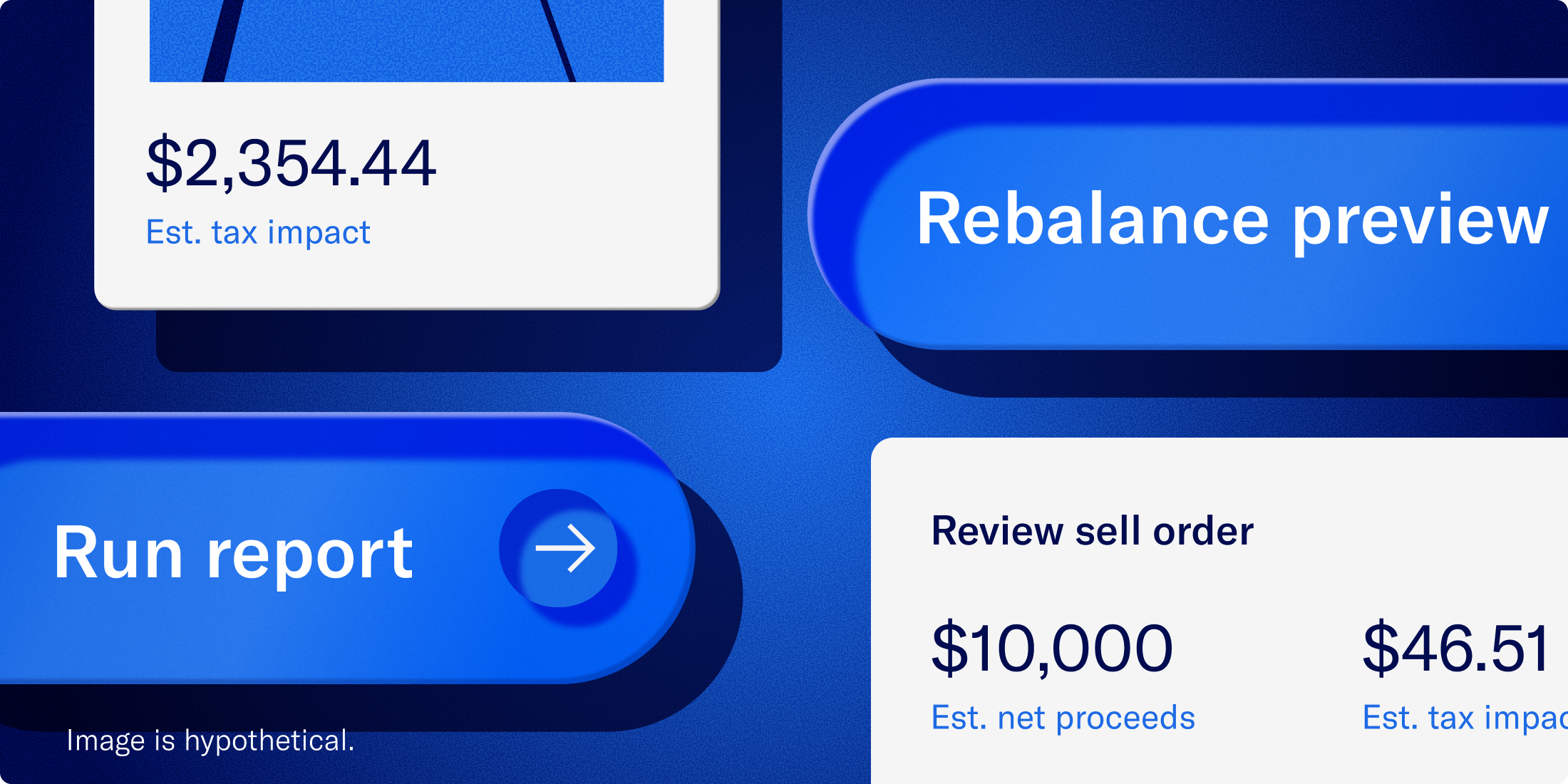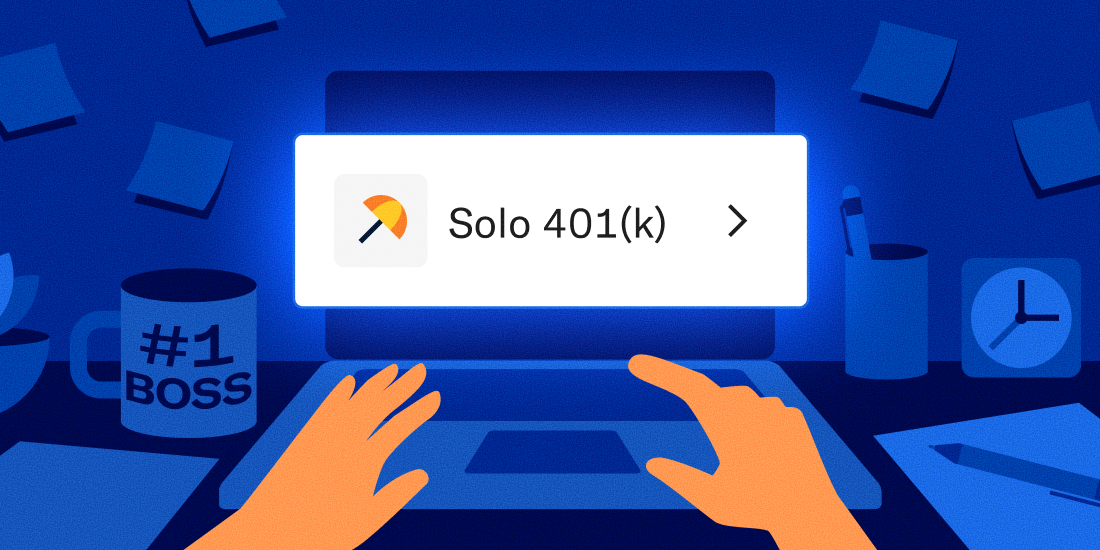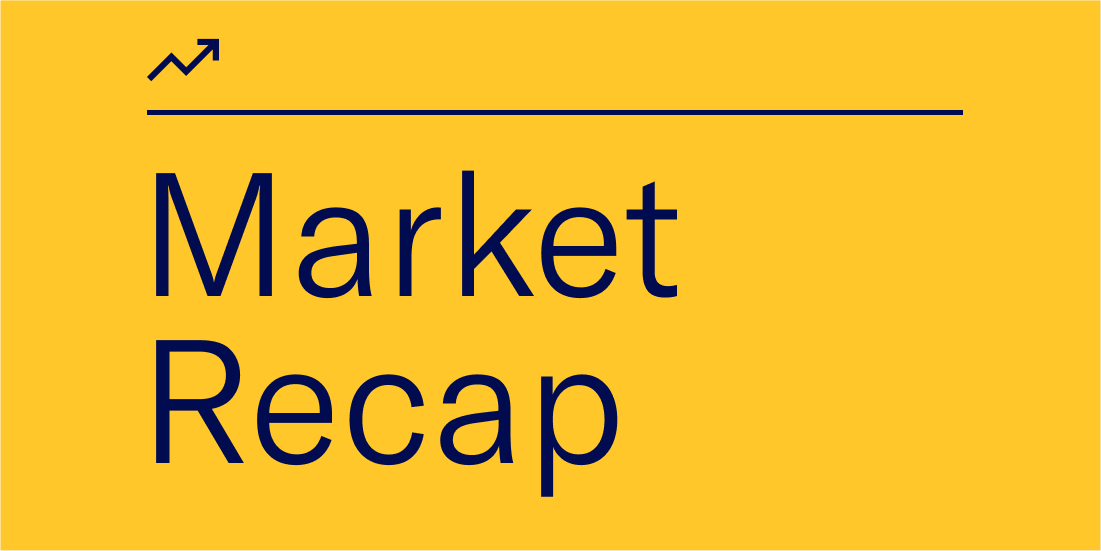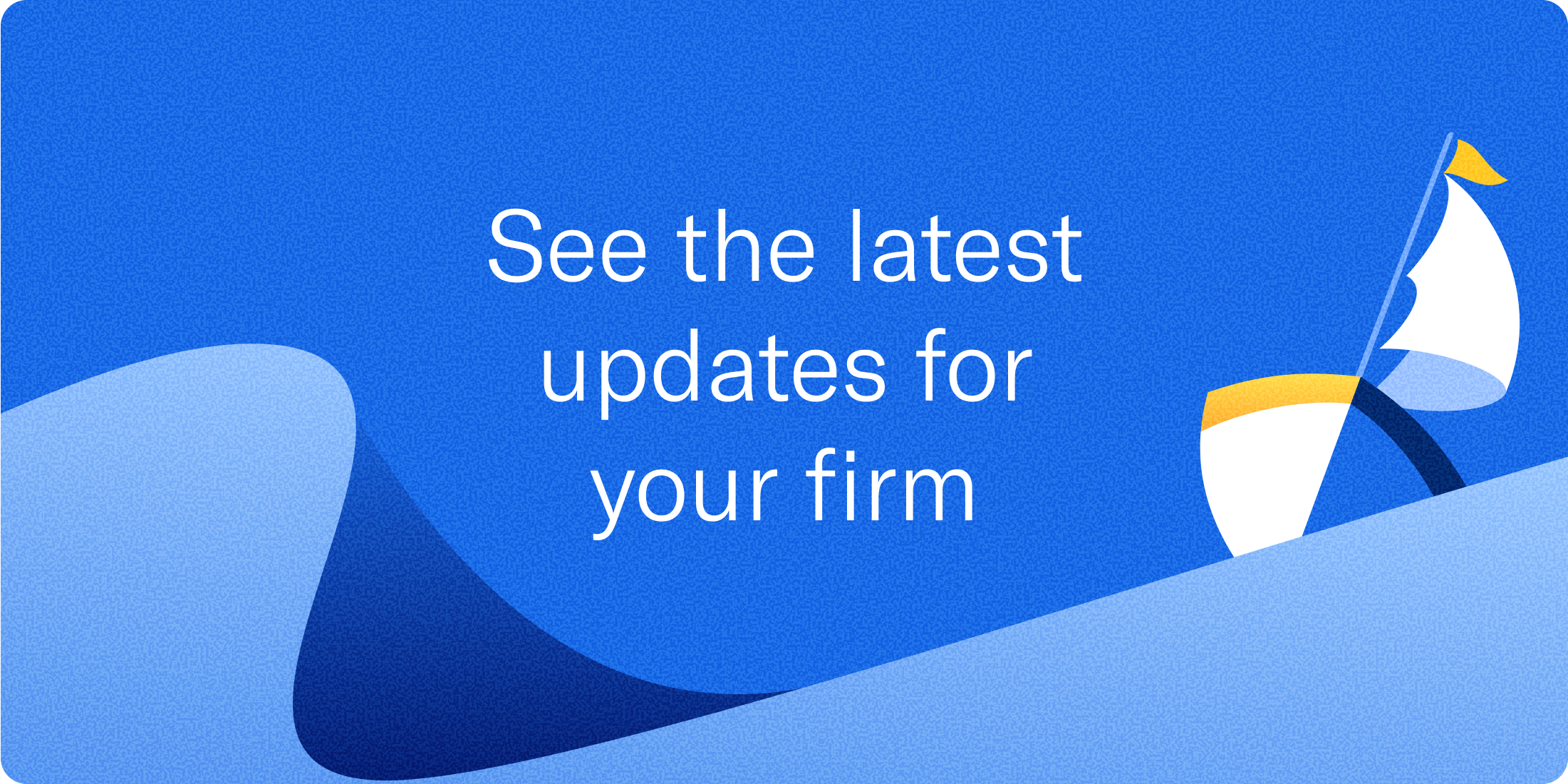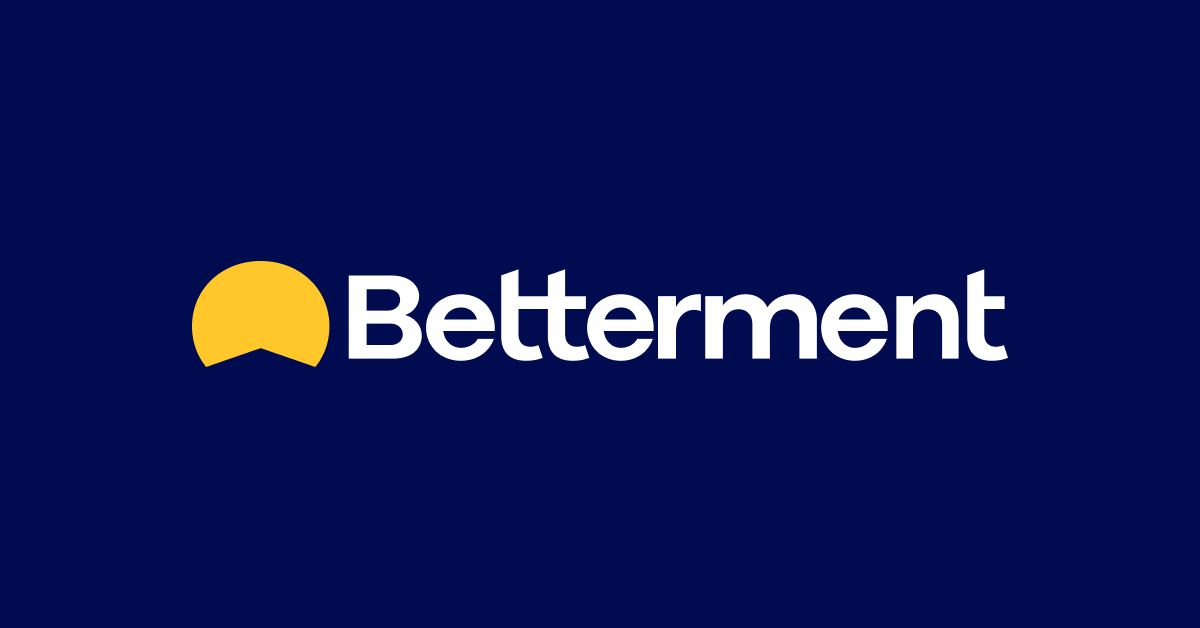Advisor Resources

Sort by:
-
![]()
What’s new from Betterment Advisor Solutions
What’s new from Betterment Advisor Solutions Dec 19, 2025 9:18:01 AM Explore the latest updates designed to give you more control, transparency, and efficiency across your workflows. Table of contents Portfolio management NEW: Tax impact preview when you adjust rebalancing and drift settings The 2026 T3/Inside Information Software Survey Position-level trading Advisor experience Enhanced client management Retirement Improved plan reporting The state of retirement readiness in 2025 Top content Generational approaches to modern advisory services Scaling tax efficiency for every household in 2026 See the tax impact before you act Evaluate the tax impact of portfolio changes before rebalancing—now integrated into more actions than ever. In addition to showing up after a triggered rebalance, the rebalancing preview gives you a clear view of how adjusting rebalancing or drift thresholds may affect clients’ realized gains or losses, so you can act with confidence. The preview screen lets you view: Estimated short- and long-term gains Wash-sale warnings Projected trades Shape the future of advisor technology The annual T3/Inside Information Software Survey is live, and Betterment Advisor Solutions has been included in the trading, rebalancing, and tax-loss harvesting software category. This year, we’ve made tax efficiency even simpler for you and your clients—and we’d love to hear your thoughts. Share your thoughts Coming soon: Trade exact positions with ease Quickly buy or sell specific stocks, ETFs, or mutual funds right from the platform to maintain alignment with each client’s long-term strategy. Trade positions to streamline transitions, offload legacy holdings, and move clients into investments that better fit your model. It’s a fast, efficient way to keep portfolios consistent, clean, and easy to manage at scale. To come in 2026: Direct Indexing and UMAs, along with additional capabilities. We heard your feedback, and have refreshed the advisor dashboard to make client management faster, clearer, and more aligned with how you work. Take a look: Enhanced Household page: Get a consolidated view of all accounts and household performance. No more toggling or scrolling—just faster visibility across every relationship. NEW: Account Overview page: Access deeper insight with a single click. You can now view a detailed breakdown of holdings, allocation, drift, and other portfolio insights directly from your dashboard. Together, these updates make it easier to manage portfolios at the household level, helping you move quickly from insight to client action. Explore your dashboard Deliver more meaningful plan insights with improved reporting Spend less time interpreting reports and more time advising. With improved navigation, expanded data fields, and faster access to trade information, it’s easier to provide the clarity sponsors expect. These improvements can help you keep every plan stakeholder aligned, reduce back-and-forth, and provide reports that are simpler to interpret at a glance. Discover all available reports The state of retirement readiness in 2025 This year’s Retirement Readiness Report uncovers a striking contrast: Employees feel more financially stressed, yet more “retirement ready” than before—a disconnect that shapes how they show up at work. The report highlights 11 key insights about how workers save, spend, and engage with benefits. Advisors can use these findings to help plan sponsors strengthen both long-term retirement readiness and short-term financial wellness. Read the report Generational approaches to modern advisory services Our latest Advisor Survey highlights how RIAs are adapting to a rapidly changing landscape. Gen Z, Millennial, Gen X, and Baby Boomer clients all bring different expectations around communication, technology, and financial guidance. You’ll find insights on shifting workflows and the rise of tech-forward advisory models, as firms blend automation, AI, and personalized service to meet clients where they are. Check out the survey Your 2026 tax game plan: From optimization to scale In our upcoming webinar, Betterment thought leaders discuss how leading firms are systematizing tax efficiency at scale. Get practical ways to extend after-tax value across every household using Betterment’s automated portfolio management tools. Register today Log in to explore what’s new, or reach out to your relationship manager if you’d like to take a closer look at any of these features. If you’d like to take a look around with someone from our team, book a demo. -
![]()
The solo 401(k): An overlooked tool for your high-income clients
The solo 401(k): An overlooked tool for your high-income clients Nov 10, 2025 1:49:08 PM Solo 401(k)s can create new planning opportunities for advisors. Key takeaways: Solo 401(k)s aren’t just for freelancers—many of your high-income clients may qualify. Your clients can save up to $70,000 (or more with catch-ups). Help your clients combine pre-tax and Roth strategies for flexible tax planning. Identifying side income helps deepen client relationships and provide holistic financial planning. Betterment makes Solo 401(k)s simple with 100% digital setup and funding. When you think of a solo 401(k), you might picture a full-time freelancer or sole proprietor. But the reality is much broader… If your high-income clients with full-time jobs (doctors, attorneys, executives, etc) also have self-employment income, a solo 401(k) can offer powerful financial planning opportunities. For financial advisors, this opens the door to serve a wider range of clients using solo 401(k)s—from a corporate VP who consults on the side, to a physician with hourly contract income, to a creative executive with a side LLC for freelance work. Solo 401(k) value for clients: High contribution limits and tax flexibility A solo 401(k) allows both employee and employer contributions, resulting in higher total limits than traditional IRAs or even many workplace 401(k)s. For 2025, contribution limits for eligible participants are: Employee contribution: Up to $23,500, and if your client is over 50, they can make "catch-up" contributions of up to $7,500 for ages 50-59 and over age 64, and “super-catch-up” contributions of up to $11,250 for ages 60-63. Employer contribution: As the business owner, your client can contribute up to 25% of their net self-employment income (20% for sole proprietors and partnerships). Advisors can guide clients in using a solo 401(k) along with other retirement plans to: Lower taxable income for the current year using a traditional solo 401(k) Build long-term tax diversification through a Roth solo 401(k) Or combine both approaches based on each year’s tax outlook This flexibility makes the solo 401(k) particularly appealing for high earners who’ve already maxed out other retirement vehicles. Solo 401(k) value for advisors: Deeper relationships with high-income clients As a financial advisor, identifying clients with self-employment or side-business income can create deeper, long-term client-advisor relationships. And offering a solo-401(k) is a natural opportunity to ask if a client has side income. By introducing a solo 401(k) , advisors can: Show clients that you offer proactive planning solutions Differentiate your practice by uncovering overlooked retirement opportunities Demonstrate your ability to coordinate tax and investment strategies If a client is interested, you are in a position to guide them through determining eligibility, selecting contribution levels, and coordinating with tax professionals to help them get the most from their solo 401(k). What about enrollment? Betterment has you covered Setting up a solo 401(k) requires some administrative steps—such as adopting a plan document, establishing a trust account, and filing Form 5500-EZ once plan assets exceed $250,000. However, these requirements are straightforward with the right support. Betterment’s advisor platform helps streamline solo 401(k) account setup and administration, providing you an all-digital solo 401(k) designed to help you deliver exceptional value to your self-employed clients. Digital account opening: Skip the hassle with fully digital account creation, including e-signature on plan adoption agreements. Your clients can set up or convert an existing plan quickly, with zero fees for plan establishment. Digital contributions: Fund in-platform—no more mailing in checks. We accommodate ACH and internal transfers for employee and employer contributions, and contributions are automatically tracked to simplify tax season. Plus, new accounts can enjoy up to a $1,500 tax credit over three years with auto-enrollment. Roth and traditional tax strategies: Offer both Roth and traditional contribution options, giving your clients the flexibility to choose tax-free growth or immediate tax savings—whichever approach is best for their retirement. See how to offer Betterment’s solo 401(k) to your clients today. -
![]()
AI, high valuations, and market risks: What investors should know
AI, high valuations, and market risks: What investors should know Oct 6, 2025 9:30:00 AM AI opportunity: Market insights for the third quarter of 2025. Key takeaways U.S. stocks are expensive but not at dotcom levels. AI spending is boosting valuations, though expectations are tamer. An AI slowdown could weigh on markets, making diversification key. Shifting some stock exposure to bonds can reduce risk. *Valuations don’t predict near-term moves—stay balanced. Despite signs of a slowing US economy, client portfolios have rallied, thanks to a historic bull market. Yet a sense of unease permeates much of investors’ discourse. Inevitable comparisons to past bull runs that ended in crashes are top of mind, leaving investors to ponder the age-old question: Will this time be different?” And specifically: Is the hype around AI just another speculative market bubble? The Shiller Cyclically Adjusted Price-to-Earnings (CAPE) ratio serves as a popular gauge of frothiness in the valuations of stocks. Developed by Yale economist Robert Shiller, the indicator divides the S&P 500’s price by its companies’ inflation-adjusted earnings averaged over the past 10 years, showing how cheap or expensive the market looks while smoothing out short-term fluctuations. U.S. large-cap stocks are about as expensive as they were at peak pandemic recovery levels in 2021, though still below dotcom heights. Bullishness, largely on the back of the AI investment boom, has pushed valuations into expensive territory, so investors should temper their expected returns. However, it doesn’t necessarily mean that the market will not rally further, or that a selloff is imminent. Goldman Sachs Global Investment Research notes that long-term earnings growth expectations, implied by market pricing, are still below 2021 and dotcom-era levels, which might indicate that investor expectations have not over-extended themselves as much as before. Goldman also highlights an important difference: The average P/E ratio of the 10 largest tech, media, and telecom stocks today is 31x—compared with 41x, at the height of the dotcom bubble, in December 1999. Still, a slowdown in AI investment seems inevitable, likely placing downward pressure on stock prices. This risk underscores the importance of portfolio diversification, both across asset classes and geographies. As we often note, stock valuations outside the U.S. look less elevated, even after year-to-date rallies in international developed and emerging markets that have outpaced the U.S. The market is also contending with fresh tariff announcements, along with the lingering effects of those imposed earlier in the summer. Higher import costs have added pressure to goods prices, but inflation has remained low enough for the Federal Reserve to cut rates in September in a bid to support the labor market. More accommodative monetary policy should support economic growth and portfolio performance, though it carries risks of higher inflation and financial instability. These developments ultimately outweigh the significance of yet another short government shutdown in the eyes of the market. For investors with shorter time horizons and lower risk tolerances, shifting slightly from stocks to bonds can align a portfolio with a waning risk appetite. Lower volatility in inflation and interest rates can now potentially support risk-adjusted returns in fixed income as well. However, we are loath to suggest ever completely giving up on stocks. Price-to-earnings ratios have climbed, but these metrics have a poor track record of predicting near-term market moves, and investors should balance their portfolios for both downside and upside risks. AI is a powerful force reshaping markets, but it shouldn’t dominate portfolio decisions on its own. The task is to keep portfolios anchored to long-term goals, weighing transformative innovations like AI alongside broader risks and opportunities—not reacting to headlines. -
![]()
What’s new from Betterment Advisor Solutions
What’s new from Betterment Advisor Solutions Oct 2, 2025 4:11:04 PM Discover the latest products and features launched in Q3 2025, designed to give advisors more control, flexibility, and transparency. Table of Contents Rebalancing Billing Integrations Advisor experience Retirement Explore our newest updates, featuring enhanced portfolio management, smarter billing, and a smoother experience. This upgrade is designed to help you gain more control and transparency for delivering efficient, tax-smart outcomes to your clients. Preview the tax impact before you rebalance No surprises. No blind spots. Just a clear view into the expected tax impact–down to the position level and how it factors into each client’s capital gains allowance. Now you can see what happens when you trigger an immediate portfolio rebalance. And soon, you’ll be able to preview the tax impact when you: Turn on/off rebalancing or change the drift threshold Initiate a portfolio migration The preview screen also provides insights into wash sale warnings, short- and long-term gains and losses, post-trade weights, and more. We're making it easier to evaluate tax implications and make more informed decisions aligned with your clients’ goals. Take an interactive tour Streamline fees with cash-first billing Now when you choose cash-first billing, you can opt into a strategic fee structure that draws funds from Cash Reserve, then taxable investing accounts, and lastly, retirement accounts to better preserve tax-advantaged dollars. With cash-first billing, you can: Improve cash flow management: Avoid liquidating investments to cover advisory fees, reducing potential tax implications. Create a seamless client experience: Ensure fee payments are handled smoothly from Cash Reserve balances, so clients can stay fully invested without interruption. Tailor your approach: Choose a fee structure that suits your needs, and lets you provide a more personalized approach to portfolio management. Cash Reserve offered by Betterment LLC and requires a Betterment Securities brokerage account. Betterment is not a bank. FDIC insurance provided by Program Banks, subject to certain conditions. Learn more. Adjust fees with flexible sharing Now you can fully cover (or share) Betterment fees out of the overall fee you charge clients, giving you greater flexibility in how platform costs are managed. This option lets you absorb, share, or pass along fees based on your business model, creating a more transparent experience that aligns with your practice. Learn more Streamline reporting with the Capitect integration Now you can view Betterment accounts alongside other custodians in Capitect, a robust reporting and billing platform. Our latest integration lets you access client data and run performance reports—all in one place—so you can manage more with less effort. Learn more Access robust transaction reporting faster With our refreshed Client Activity Page, you can see recent transactions, trade-level details, and allocation changes all in one place. With easier access to client data, you can respond to clients quicker, with clearer information. Gain more flexibility in account setup You now have greater control over how you plan and organize client accounts. Instead of being required to assign a goal, you can set up accounts with or without them—giving you the flexibility to structure accounts that align with your workflow. Make solo 401(k)s simpler and more rewarding Your self-employed clients may now be eligible for up to $1,500 in tax credits—$500 per year for three years—when they open a solo 401(k) with auto-enrollment. As part of our fully digital solo 401(k) solution, auto-enrollment helps further maximize client savings by streamlining contribution setup and eliminating manual steps. Accounts default to a 3% contribution rate to ensure eligibility, with the flexibility to adjust and integrate seamlessly with our tax-smart tools to maximize efficiency. You and your clients can also choose the funding approach that works best for you, lowering barriers to entry so clients can start saving sooner and stay on track. And with upcoming Roth enhancements, including mega backdoor Roth conversions, your clients will have even more ways to boost retirement savings. Learn more Unlock greater plan onboarding oversight Plan advisors can now view detailed onboarding progress with estimated launch dates and key details for every plan: Onboarding tasks: Review what’s in progress, not ready, or complete, so you always know where each plan stands. Launch milestones: Stay on top of key dates like document signing, employee setup, and payroll approval to ensure a smooth plan launch. Plan details: Quickly access plan type, payroll provider, and your Betterment onboarding contact to manage every plan with confidence. If you missed the last update, see all the new features in Q2 of 2025. And, if you’re ready to talk to someone on our team, book a demo today. -
![]()
How to set up the Capitect integration
How to set up the Capitect integration Oct 1, 2025 4:18:05 PM Overview Capitect offers modern, holistic performance reporting, flexible client billing, and personalized portfolio rebalancing tailored for today's advisors and their clients. The integration between Betterment Advisor Solutions and Capitect enables advisors to easily include Betterment accounts in reporting, billing, and rebalancing. The information sent to Capitect includes: Account information Positions Transactions Tax lots Enabling the integration You can set up this integration for your firm by taking the following steps: Log in to your advisor dashboard and navigate to Settings > Integrations. Select Capitect from the list and click Connect to Capitect. You will see confirmation that the integration has been enabled. Data will be sent to Capitect within one business day. Once the integration has been enabled, Capitect will reach out directly with next steps. -
![]()
Learn how switching custodians could power your practice into the future
Learn how switching custodians could power your practice into the future Sep 11, 2025 12:00:00 AM Learn how switching to Betterment Advisor Solutions could power your practice into the future. Running an independent RIA comes with big challenges—and even bigger opportunities. Betterment Advisor Solutions gives you an all-in-one custodial platform with the technology and support to streamline your business, serve more clients, and deliver a modern experience across cash, investing, and retirement. Our service and technology can simplify the switch At Betterment Advisor Solutions, we know switching custodians is a big move, so we’ve made sure that not only is the process easy, but that your experience in your first 12 months helps set you up for long-term success. We’ve designed a three-pronged approach to help you make the switch: #1 A dedicated relationship manager You're more than just a number or a customer — you're our partner. The high standard of service we hold ourselves to means that we have no minimum AUM requirement and every firm gets a dedicated single point of contact, no matter their size. Your relationship manager is your guide, ensuring you are fully trained on how to best use all our tools and features throughout your first year. Your relationship manager’s goal is to get you utilizing our platform to its maximum capability for your practice and your clients. #2 Fully digital onboarding Our digital onboarding streamlines the repapering process for you and your clients. You can easily onboard individuals and households, and complete account set up paperlessly. They’ll get a single email to sign off on everything at once. #3 Tax-smart asset transitions Our tooling enables you to granularly control how assets are moved from your current custodian to Betterment Advisor Solutions in a tax-efficient manner. You can leverage our paperless workflows to move assets over in kind. Easily move your client’s funds into your preferred portfolio model while optimizing their tax impact. Our people and technology empower 600+ RIAs and their clients each day Once you’ve made the switch to Betterment Advisor Solutions, we’re dedicated to seeing your practice grow. We take pride in being the modern end-to-end custodian for the modern RIA, balancing human support with future-forward technology. As our partner, we give you the tools that help simplify and streamline your practice operations while building a successful book of business. Dedicated advisor support Regardless of your firm’s size, we provide dedicated support to answer all of your questions. Our support team members are platform experts, here to resolve any issues you may face and answer questions from the most mundane to the most technical. We’re more than just chat support. You can reach out via email or phone for any type of issue or question. Your relationship manager isn’t just for onboarding. They’re your long-term partner every step of the way. “Advisors, especially small and mid-sized RIAs most affected by Schwabitrade, shouldn't sit back and accept lower-quality service. We’re here to provide you with a better option.” —Tom Moore, Senior Director, Betterment Advisor Solutions Time-saving automation tools Our tools take care of critical-yet-time-intensive tasks so you can focus on your real value — planning, strategy, and client relations. We automate tax-optimization strategies for you including asset location and tax loss harvesting. Flexible billing gives you the freedom to use custom asset-based, fixed fee, or tiered billing plans and set the frequency your clients are charged. We collect the fees for you and pay them out automatically. Our Co-pilot dashboard aggregates urgent client needs all in one place, becoming your client command center, enabling you to streamline your high-priority work. Exceptional client experience Using our client-facing mobile app and web experience paired with our powerful advisor planning tools, your firm can provide one of the most delightful client experiences on the market. Empower your clients at home or on the go with our interactive portal, giving them convenient insights into their investments. Plus, you can sync held-away accounts so they see all of their savings and investments in one place. Better manage household accounts with a customizable account structure, using bucketing strategies to help clients work towards long-term goals. Engage with your clients on a deeper level with our portfolio analysis, retirement planning, and performance tracking tools. Build your seamless tech stack We integrate with other well-known tools giving you a better experience for you and your clients. And don’t worry, if you work with a tech provider we haven’t partnered with, your relationship manager will explore adding them to our integration options. Transparent pricing in a not-so-transparent world Schwab and other custodians may say their custody services are “free” but in the RIA space, it usually means that your client is the one paying for it. We charge a simple platform fee that allows us to improve our custody platform while providing exceptional support. This enables you to truly put your clients first and help them grow their wealth.

